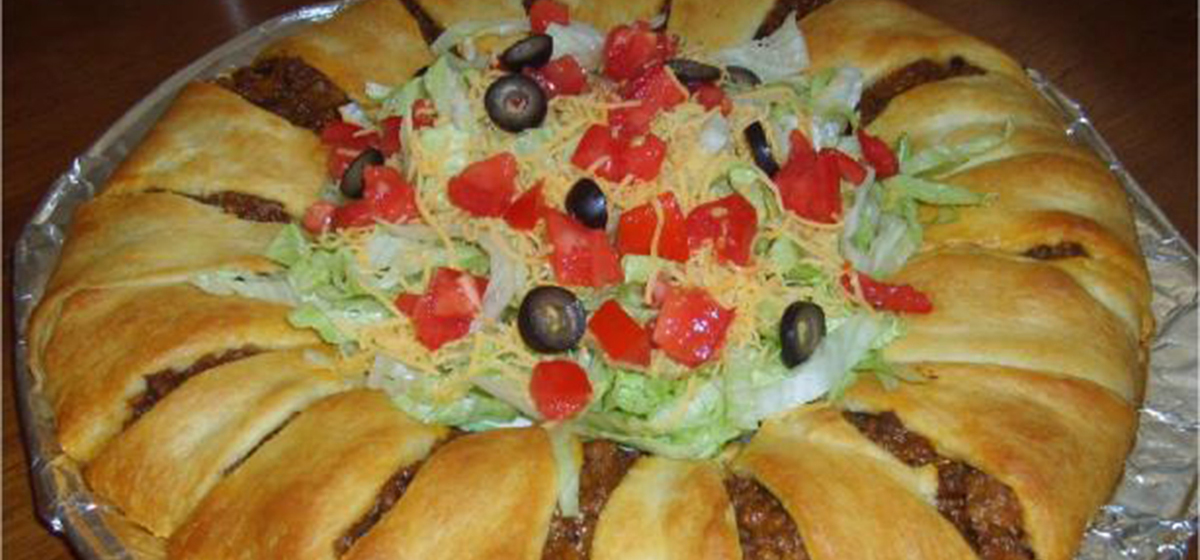 The food served each day at the New Waverly High School cafeteria is prepared according to rigid guidelines and is served with astonishing efficiency. But the most remarkable thing the Postcards team learned on its visit was the amount of thought and care that goes into each high school student’s breakfast and lunch.
The food served each day at the New Waverly High School cafeteria is prepared according to rigid guidelines and is served with astonishing efficiency. But the most remarkable thing the Postcards team learned on its visit was the amount of thought and care that goes into each high school student’s breakfast and lunch.
8:30 a.m. – The Postcards team arrives at the New Waverly High School cafeteria just as lunch preparations begin, but the “lunch ladies” have already been on the clock since 6:30. The manager, Daniela “Danie” Clark, in her 20th year in the cafeteria, is busy at the computer.
Danie briefs us on the many tasks that have already been performed this morning. The temperature inside refrigerators and freezers has been recorded; the milk cooler has been refilled. The day’s food production records have been studied, and work assignments have been made. Students have already been served breakfast (breakfast burritos, breakfast tacos, or pancake-covered sausage on a stick) and are now in class. Breakfast leftovers have been counted and documented. Student and teacher orders for chef salads have been taken. The computer has been fired up.
8:45 – Lunch preparation is well underway. Maria Hernandez, who has worked at the cafeteria since 1995, is busy in the kitchen. Although many items served in the cafeteria are commercially prepared, some things are still made from scratch, including pico de gallo, cornbread, Maria’s own recipe for Mexican rice, and pasta entrées like chicken cheesy pasta, spaghetti, and chicken Alfredo.
9:00 – Danie starts the slush machine. Two choices of frozen slushes made from 100 percent fruit juice are offered each day. Today’s flavors are pineapple and fruit punch. Danie tells us that slushes, which are on the à la carte menu at $1 per generous serving, are popular with students. The à la carte menu also offers Blue Bell ice cream bars, including ice cream sandwiches, fudge bars, and dream bars. The cafeteria workers used to make homemade cookies, but because new federal guidelines have made this difficult, they bake Otis Spunkmeyer cookies instead. The cookies have been individually wrapped in odd minutes of the workers’ time.
9:10 – Patrice Hayes, who is in her first year at the cafeteria, checks the temperature of chicken that will later go in chicken-stuffed baked potatoes. She’ll check the temperature again before serving, says Jewel Gregory, child nutrition director for New Waverly Independent School District. Chicken must be cooked to an internal temperature of 165 degrees or higher, and kept warm at 140 degrees or higher. “They have it down,” Jewel says. She notes with pride that the Texas Department of State Health Services conducted a bi-annual inspection at the school district’s cafeterias last week, and the intermediate, junior high, and high school cafeteria all passed with zero violations. The elementary school cafeteria was charged with only one minor violation, which was corrected on site.
 9:20 – Patrice sprays a tray of large potatoes with butter-flavored vegetable oil before baking. Maria makes garlic Texas toast.
9:20 – Patrice sprays a tray of large potatoes with butter-flavored vegetable oil before baking. Maria makes garlic Texas toast.
9:30 – Patrice washes dishes. The staff tries to clean as they go, she says, taking advantage of short breaks in the schedule. She uses three commercial-size sinks for washing, rinsing, and sanitizing.
9:35 – Danette Abbey, manager of the junior high cafeteria (and a 23-plus year veteran of New Waverly ISD), arrives to “mooch” a few chef salad containers from Danie. “The kitchens share a lot with the others so nothing goes to waste,” Jewel says. She has worked with Danette, Danie, and Maria in the past and says, “It takes a good team to make things run smoothly, and I feel like I am part of a terrific team.”
9:45 – Maria begins preparing 18 lasagna roll-ups for the first lunch. “The second lunch likes them more,” she says. Amazingly, Maria can judge how much of each entrée to prepare because she knows each student’s favorite. “When you see them all the time, you know what they are going to order,” she says. “Sometimes I don’t remember the names, but I remember the faces.”
 9:55 – A student drops by the cafeteria. “Is it too late to order a chef salad?” she asks. “You are in luck,” Danie replies with a smile. Orders are supposed to be in by 8:30, but Danie has not made the salads yet.
9:55 – A student drops by the cafeteria. “Is it too late to order a chef salad?” she asks. “You are in luck,” Danie replies with a smile. Orders are supposed to be in by 8:30, but Danie has not made the salads yet.
10:00 – Lunch preparations continue. Jewel explains that it is a challenge to meet the guidelines of the Healthy Hunger-Free Kids Act of 2010. Each lunch must contain a protein source, bread, fruit, a vegetable, and low-fat milk. Vegetables must be in a variety of colors; breads must be at least 51 percent whole grain. Furthermore, the cafeteria must meet guidelines on fat, sodium, and calories. Fryers were taken out of the cafeteria, because nothing may be fried. Danie says with a knowing grin that, if an entrée is described as “oven fried,” students will eat it without complaint. However, if it appears on the menu as “baked,” they won’t eat it.
 10:05 – Danie prepares made-to-order chef salads. Students and teachers have a choice of cubed ham or turkey, half a boiled egg, baby carrots, lettuce, tomatoes, cucumbers, a pickle spear, a fruit cup, and crackers. The “lettuce” is a beautiful mixture of romaine and spinach. “The kids think it’s leaf lettuce,” Danie says. “If you call it spinach, they won’t pick it up.”
10:05 – Danie prepares made-to-order chef salads. Students and teachers have a choice of cubed ham or turkey, half a boiled egg, baby carrots, lettuce, tomatoes, cucumbers, a pickle spear, a fruit cup, and crackers. The “lettuce” is a beautiful mixture of romaine and spinach. “The kids think it’s leaf lettuce,” Danie says. “If you call it spinach, they won’t pick it up.”
 10:10 – Patrice cuts open 27 baked potatoes. She has baked 55, but thinks 27 will be enough for the first lunch because chicken “smackers”—a student favorite—are one of today’s entrée choices. If there are baked potatoes left over, they will be cubed and used in vegetable soup. The “lunch ladies” all tell us they try not to waste food.
10:10 – Patrice cuts open 27 baked potatoes. She has baked 55, but thinks 27 will be enough for the first lunch because chicken “smackers”—a student favorite—are one of today’s entrée choices. If there are baked potatoes left over, they will be cubed and used in vegetable soup. The “lunch ladies” all tell us they try not to waste food.
 10:15 – Maria pours warm sauce over the lasagna roll-ups. She knows from experience it will taste better if she heats the sauce before pouring it over the noodle-wrapped cheese. It’s one of the many things she does to make lunch entrées taste good. She then puts chicken “smackers” in the oven.
10:15 – Maria pours warm sauce over the lasagna roll-ups. She knows from experience it will taste better if she heats the sauce before pouring it over the noodle-wrapped cheese. It’s one of the many things she does to make lunch entrées taste good. She then puts chicken “smackers” in the oven.
10:20 – Patrice puts cheese-garlic rolls in the oven and begins topping baked potatoes with chicken and cheese. (Students will also be offered individual packets of butter substitute, fat-free sour cream, and ranch dressing.) One ounce of shredded cheese goes on top of each baked potato, but Patrice does not need to measure; she has learned that one fistful equals one ounce. She measures a fistful and, sure enough, it is the right amount. “See how perfect she does it?” Danie asks proudly.
 10:30 – Maria puts garlic Texas toast into the oven, then takes the internal temperature of the baking chicken “smackers.” To make them as tasty as possible, Maria takes them out of the oven when the required internal temperature is reached, yet while they’re still soft. They look delicious, and it’s easy to see why they are student favorites. She tells us other popular items on the revolving menu are pizza, chicken tender baskets, and spicy chicken sandwiches.
10:30 – Maria puts garlic Texas toast into the oven, then takes the internal temperature of the baking chicken “smackers.” To make them as tasty as possible, Maria takes them out of the oven when the required internal temperature is reached, yet while they’re still soft. They look delicious, and it’s easy to see why they are student favorites. She tells us other popular items on the revolving menu are pizza, chicken tender baskets, and spicy chicken sandwiches.
10:40 – Patrice puts cheese garlic rolls and garlic Texas toast on the serving line. Meanwhile, Maria stirs a blend of carrots, broccoli, and cauliflower, while Danie puts lunch in styrofoam containers to be taken to several students at the school’s alternative campus. She then dashes off to deliver them.
11:00 – Although students won’t be here for 30 minutes, lunch is ready to be served in case teachers come in earlier.
11:05 – Patrice adds ice to the coolers of water and low-sugar Gatorade (G2) bottles, which are on the à la carte menu.
11:15 – Maria is already working on tomorrow’s breakfast. (Choices will include egg tacos, donut holes, and cereal.) She tells us about proudly becoming a U.S. citizen about six years ago.
11:20 – Danie explains that precise records must be kept for government audits. Food items are therefore counted before and after lunch “to make sure the number served matches the number paid for.” Also, “You can never have zero leftovers. They want to know you have enough for everybody.” She mentions that batches of food are prepared a little at a time to minimize waste. For example, hamburger patties are not placed on buns until needed; once assembled, they cannot be served again.
 11:35 – Students with special needs arrive and are served lunch.
11:35 – Students with special needs arrive and are served lunch.
11:40 – A bell rings, and students swarm the cafeteria. As they come through a double line, they punch their unique six-digit codes into a keypad. (Each day, Danie covers the keypad with plastic wrap to minimize the spread of germs.) When the computer recognizes a student’s code, a window appears on the monitor. It shows the student’s photograph, the amount of money on the account and any food allergies. Danie uses the touch-screen with astonishing speed to tally each student’s lunch choices. She gets about 12 students through the line in one minute, even though she must process a few cash transactions.
Danie says students who qualify for free or reduced-price lunches are treated no differently than paying students, but they must take three of the five components in order for their lunches to be reimbursable. “I have them trained,” she says.
11:50 – Stragglers and students who want additional items come through the line. Meanwhile, Maria and Patrice note how much of each entrée was served so they’ll know how much to prepare for the next round of students.
12:10 – The first lunch is over. Maria bakes more chicken “smackers” for the second lunch, which will begin at 12:35. Danie replenishes the snack selection, which includes whole-grain pretzels and reduced-fat chips and cookies. Patrice says 18 potatoes were sold, and prepares a few more for the second lunch. Although 286 students are enrolled at New Waverly High School, the cafeteria staff expects a total of only 180 students for lunch. (Some leave school early to participate in the school’s vocational education program.)
12:15 – The Postcards team leaves with a new appreciation for the care and effort that goes into a school lunch. The “lunch ladies” obviously enjoy their work. “I like my kids,” Maria says. “Sometimes it’s a lot of work, but when I wake up I am ready to go to work.” Patrice, too, says interacting with students is her favorite part of the job. Likewise, Danie gets satisfaction from her work, especially when students compliment the food. She says, “They will sometimes tell you it’s the best meal they eat all day.”



